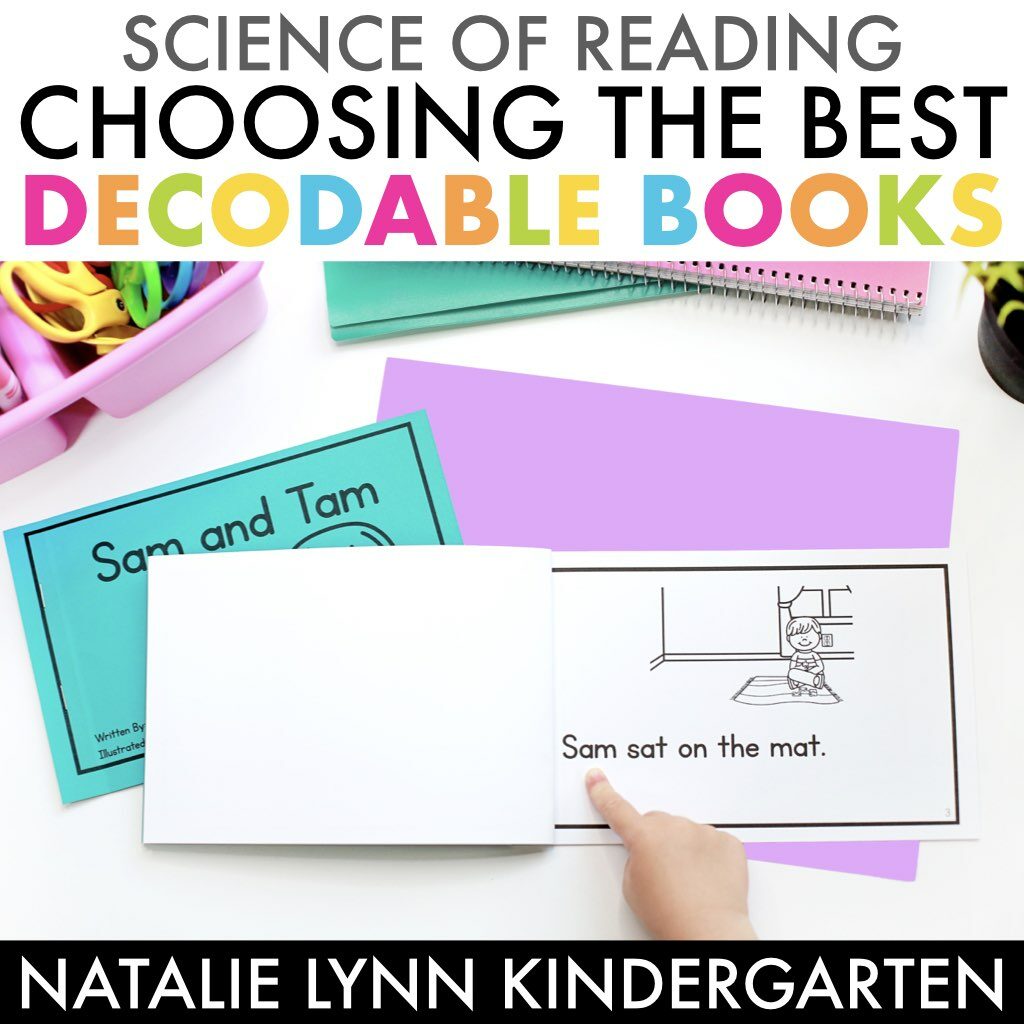
In This Blog Post: Struggling with how to choose the best decodable readers and books for your class? Here are some tips.
If you’ve been learning about the science of reading, you’ve probably heard that you should be using decodable readers in your small reading groups.
Swapping out leveled texts for decodable books can have a HUGE impact on students’ reading success!
But how do you choose the best decodable readers for your class?
It can be super confusing! Especially when you start seeing decodable books pop up all over the place. And of course they all seem to have a different way of doing things.
But it doesn’t have to be complicated!
Whether you teacher kindergarten, first, or second grade students, these tips can help you choose the best decodable readers for your class.
Tip 1: Choose Books That Follow Your Scope and Sequence
Even with all the research that has gone into the science of reading, there is no one phonics scope and sequence that has proven to be the best.
That’s good news for teachers because it means no matter what phonics scope and sequence you use, if it follows a logical sequence, you should see growth.
It’s bad news for teachers because that means that you will find decodable book series all follow different scope and sequences.
One series may teach digraphs first, while the next may teach consonant blends first.
Why is that a problem? Well, if your students haven’t learned digraphs yet and they read books from the second series, they will come across words with digraphs.
These words are not decodable to those students yet because they haven’t learned that phonics pattern. That means that what you thought were decodable readers… suddenly are not.
When you choose the best decodable readers for your class, you want them to follow the phonics scope and sequence you use.
That way, they will be truly decodable to your students. If the books are truly decodable, students can focus on the the targeted skill rather than guessing at words or getting stuck.
Tip 2: Consider Student Stamina
When you choose decodable readers for your class, you want to consider where your students are with decoding and fluency.
If your students have just left PreReader alphabet books, they won’t be able to read CVC word decodable readers with multiple sentences and words to decode.
They will need CVC word decodable books with with short sentences that use limited sounds in each book.
That is why, in my Decodable Readers Science of Reading Curriculum, there are two CVC word units.

The first unit has CVC word decodable readers with one short, 2-6 word sentence on each page. The books are limited in letter sounds used. That means that in the first book, students only have to use 4 letter sounds for the entire book!
Once students have experience decoding and are starting to get more fluent, they can move on to the second CVC words unit. These CVC word decodable books can have 2 sentences per page and the consonant sounds are not limited.
They are still progressive though, the focus is just on vowel sounds, which tend to be more difficult than consonant sounds. That means that the first books only focus on short vowel sound a. Then more vowels are slowly added in.
Likewise, if your students have lots of practice decoding and reading and they are starting to get into higher skills like vowel teams, short one-sentence books are probably not the best option for them.
Those decodable books will most likely get pretty boring pretty fast.
Tip 3: Should you have pictures?
Should decodable readers have pictures? When you choose the best decodable readers for your class, you will want to consider if you want them to contain pictures.
Why would decodable books not have pictures? Pictures in books can allow students to become too dependent on them. By eliminating pictures, you force students to focus on the words.
So why would you choose to have pictures? Well, reading means nothing without meaning. Pictures help us to better understand the text. When students decode words, they also need to assign meaning to those words. Pictures can help.
This is especially beneficial for ELL students and students with limited language background knowledge.
For example, if a student reads the sentence, “The bat had a tag,” will they know what a tag is? If the decodable reader has a picture, the student can then look and see the tag on the bat. This helps assign meaning to that word.
Side Note: Introducing decodable vocabulary words before a small group lesson is a great way to give students that background knowledge.
When you choose the best decodable readers for your class, you will want to decide whether or not you want pictures.
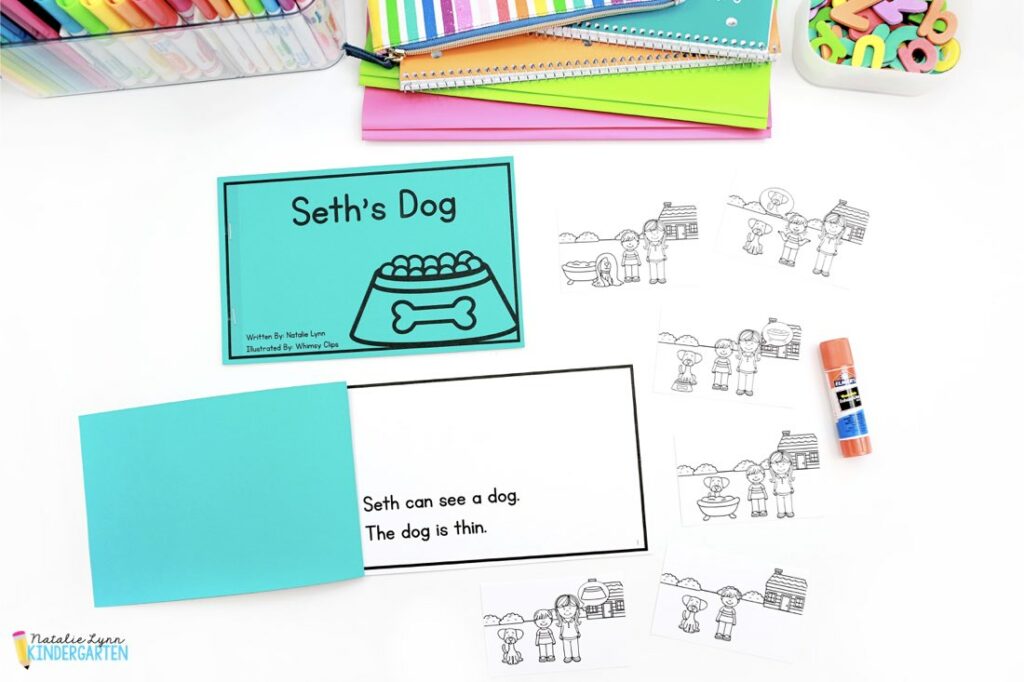
The decodable books in my Decodable Readers Science of Reading Curriculum all include both options. This allows you to easily differentiate.
For the decodable books without pictures, you also have the option to let students cut out and match pictures to the pages. This helps extend the learning.
When students have to match the pictures to the pages, they have to reread the words and really think about their meaning. It’s a great way to increase comprehension!
Tip 4: Look for books without patterns
If you’ve ever searched for simple decodable readers for your beginning readers, you’ve probably come across patterned text.
This looks like, “The man can see a hat. The man can see a bat. The man can see a rat.”
The text looks decodable, right?
The problem is that only one word in each sentence changes. The first 5 words on every page remain the same.
Students will quickly pick up on that pattern. That means instead of truly reading the words, students can memorize the pattern. They only have to do the work reading one word.
And if your decodable reader has pictures? Students won’t even have to decode that last word. They will be able to look at the picture to say. Unfortunately, this is a guessing strategy, not reading.
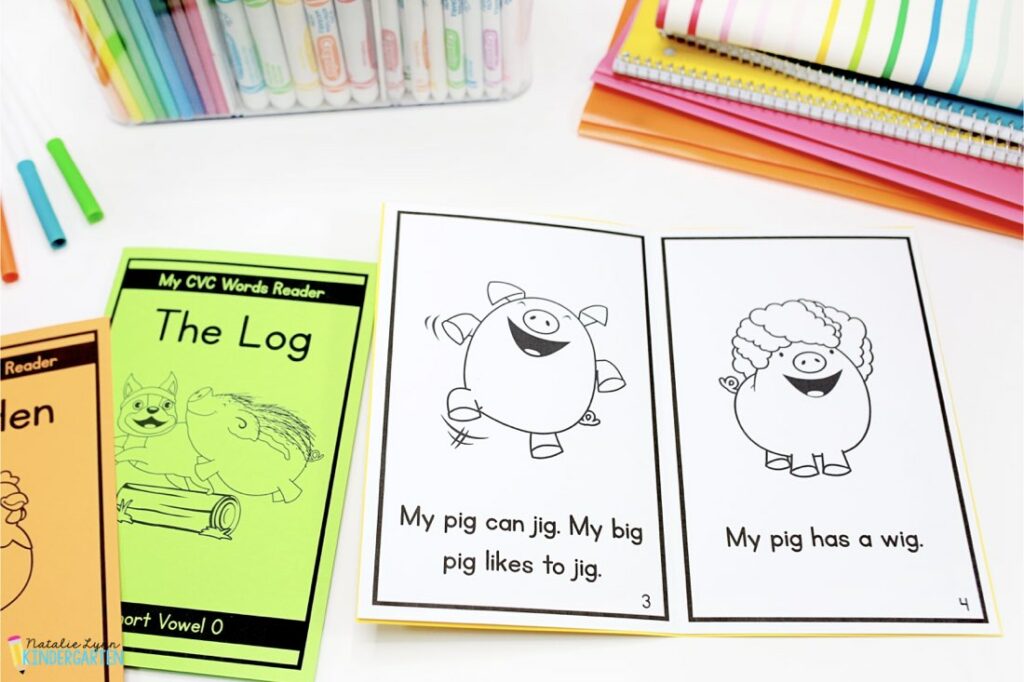
True decodable readers are not patterned. The stories can still be short and simple, while still being rigorous for our students.
For example: The man can see a cat. The cat sat. The man sat. The cat sat on the man.
The words in that story are still limited. However, they change enough from sentence to sentence that students will have to truly look at each word.
Tip 5: Look for High Interest Books
You’ve probably heard that decodable readers are boring. Maybe that decodable books have no plot.
Thankfully, there are so many quality options now that this couldn’t be further from the truth!
When you choose the best decodable readers for your class, you will want to choose stories that will be high interest to them.
If you have a student who loves animals, a book about Kim’s pet pig may be a good fit.
If you have a student who loves anything silly, a book about that pig wearing a wig and dancing a jig might be a better fit.
Adding in seasonal and thematic decodable books is also an easy way to increase student buy in!
Decodable Readers for Your Class
I hoped this help give you a starting place to help choose the best decodable readers for your students! It doesn’t have to be complicated! Just remember to look for books that follow your phonics scope and sequence and are a good length for your students. Look for decodable books that are not patterned and high interest to your students.
Looking for a place to start? You can get HUNDREDS of ready to go decodable readers and lesson plans in my Decodable Readers Science of Reading Curriculum!
Pin this post for later:



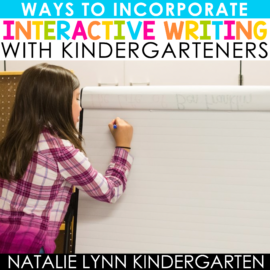
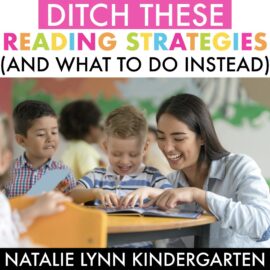
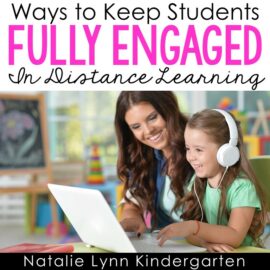

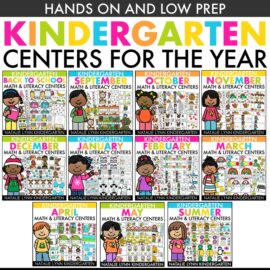
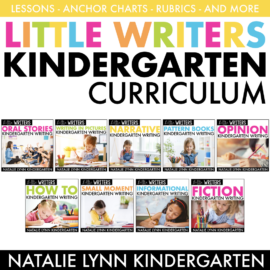
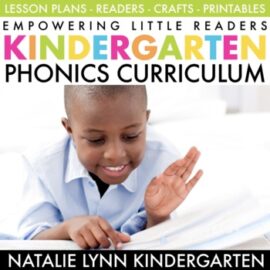
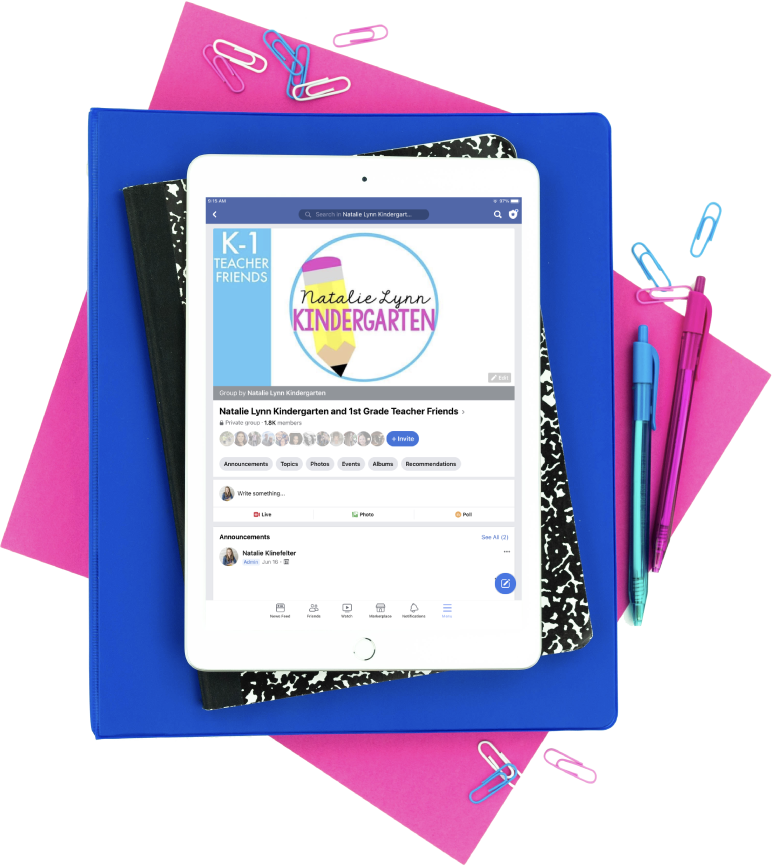

These were perfect for what I needed them for. Thank you
They were great for the students I needed them for.